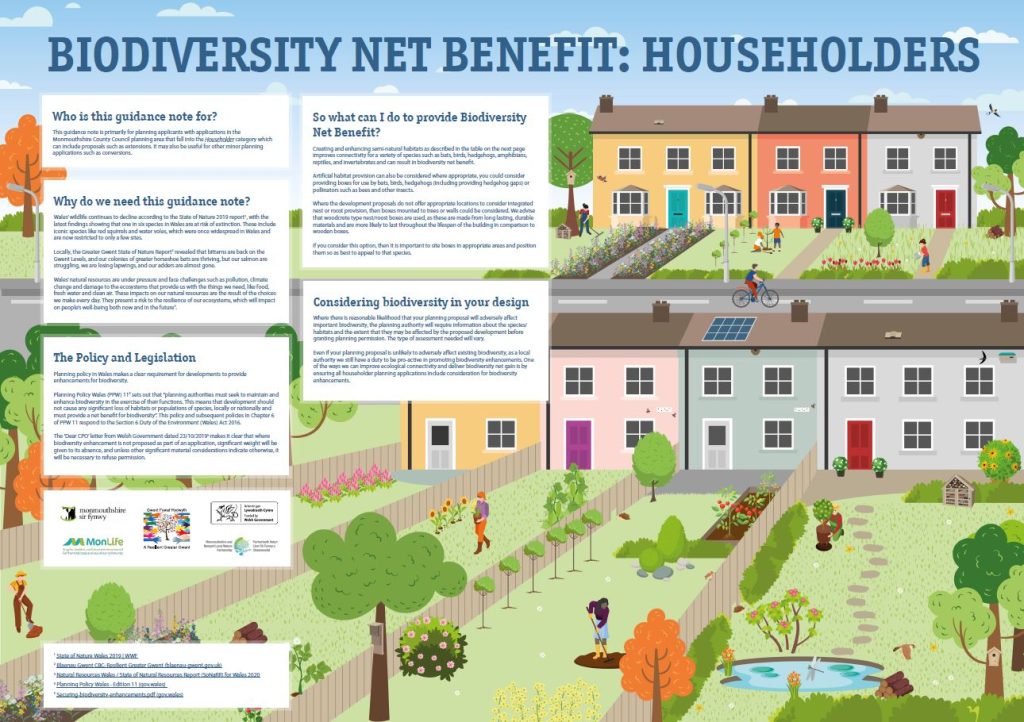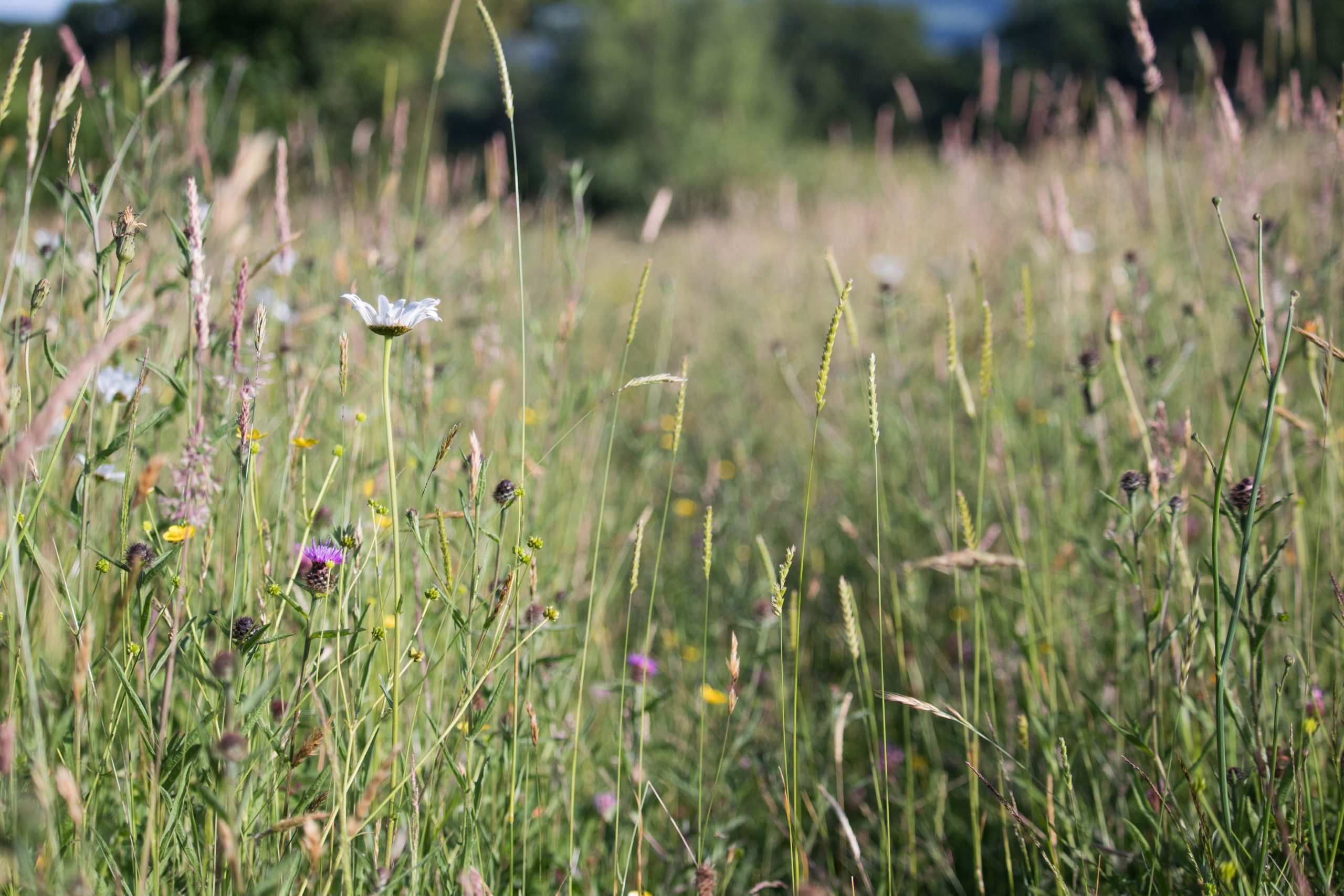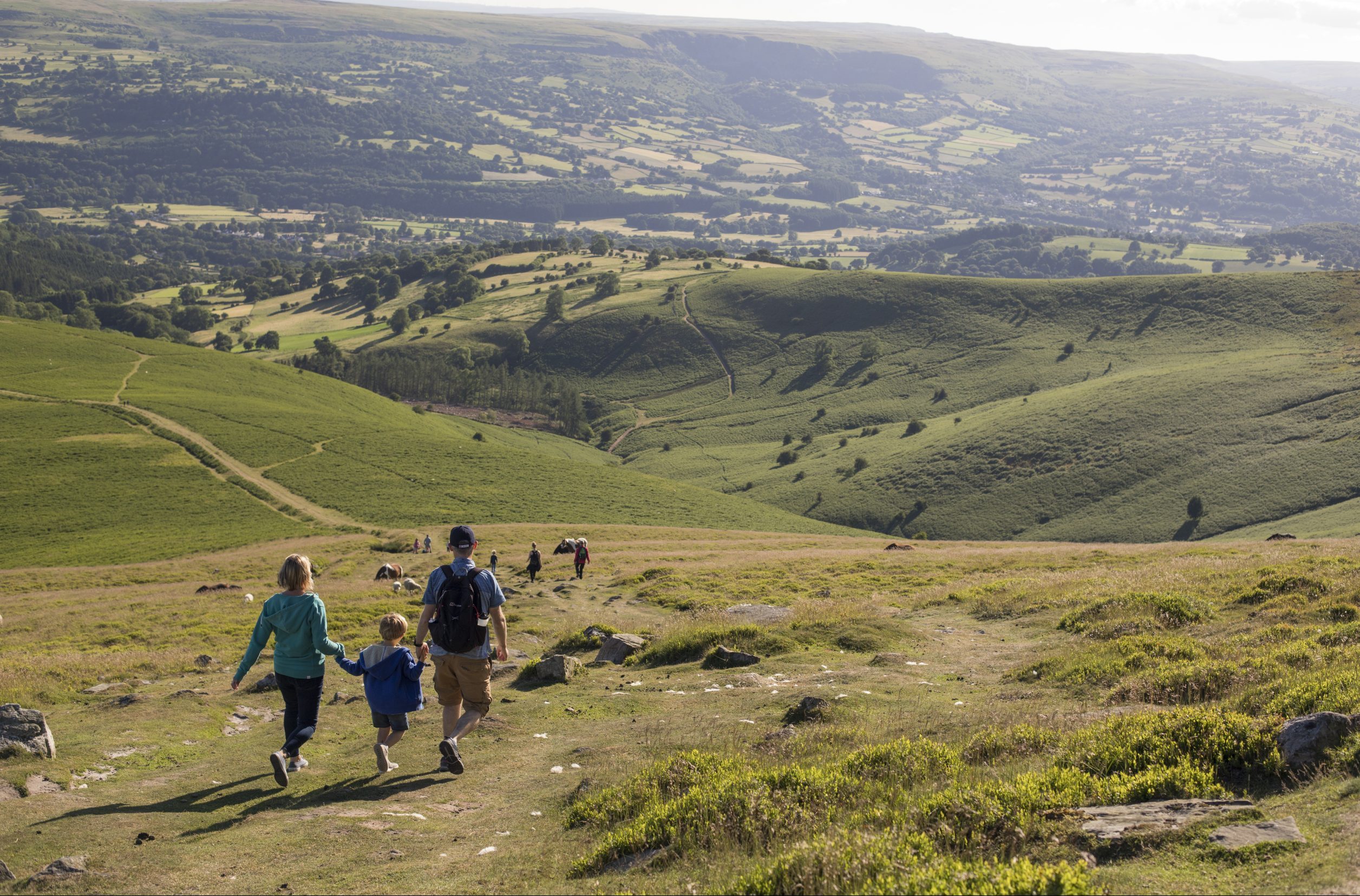Biodiversity and Planning
Monmouthshire County Council has an obligation to consider the impacts on biodiversity in carrying out their functions, which importantly includes making planning decisions. Whether is it’s a large housing development or a small householder application, the potential for the proposal to affect ecological features needs to be considered and appropriate avoidance, mitigation and compensation measures incorporated into the scheme.
What information is needed?
If there is potential for a proposal to affect ecological features, such as protected sites, priority habitats or protected species, ecological surveys and assessments may be required to support the application. This ensures that planning officers have sufficient information to make a lawful planning decision.
The Chartered Institute of Ecology and Environmental Management (CIEEM) has produced general guidance for householders applications that need ecology surveys and specific advice for what to expect from a bat survey.
Any planning queries should be directed through the planning duty officer on 01633 644831 (Monday to Friday, 9am to 5pm) or email planning@monmoutshire.gov.uk.
Net Benefit for Biodiversity
All approved planning applications must result in Net Benefit for Biodiversity; this requires developments to avoid ecological impacts as far as possible, mitigate and compensate for impacts which can’t be avoided, and importantly provide enhancements that result in an increase in biodiversity value.
The Net Benefit for Biodiversity approach doesn’t use a metric but encourages proactive consideration of biodiversity and wider ecosystem benefits on a site-by-site basis. Different enhancement measures may be more appropriate to some developments than others; where consultant ecologists are engaged, they should provide recommendations that is based on site surveys. However, not all applications require input from consultant ecologist, so we have developed our Biodiversity Net Benefit for Householders guidance to provide suggestions to achieve Net Benefit for Biodiversity.
Click the image to see our guidance for Householders.

Phosphates and River Special Areas of Conservation (SACs)
Following changes to monitoring guidance, NRW reviewed the conservation objectives for all river SACs in Wales and substantially tightened targets for phosphorus levels. The Rivers Usk and Wye are in poor condition with high relative phosphorus concentration. Any development within the river catchments has the potential to increase phosphorus levels and contribute to problem and therefore must be screened through a Habitats Regulations Assessment to determine if the proposals are likely to have a significant effect on the SAC.
For more information on the implications for planning applications visit the planning pages:
Information for Ecological Consultants working in Monmouthshire
To ensure we are always following the most up to date recommendations, Monmouthshire CC don’t have a guidance document for general survey standards, but signpost towards professional standards documents produced by CIEEM and the relevant authorities. See the CIEEM Resource Hub for best practice survey and mitigation guidelines.
Unless it can be determined that a development would have no significant ecological effects, no mitigation is required and no further surveys are necessary, a planning application should always be supported by an Ecological Impact Assessment Report (for non-EIA developments). We also refer to the CIEEM advice note when considering whether surveys are up to date enough to inform planning applications.
We are currently working on guidance for bat surveys in the Wye Valley and Forest of Deans Bat Sites SAC area. In the meantime we recommend that you refer to the Forest of Dean guidance to inform survey effort.
This post is also available in: Welsh



